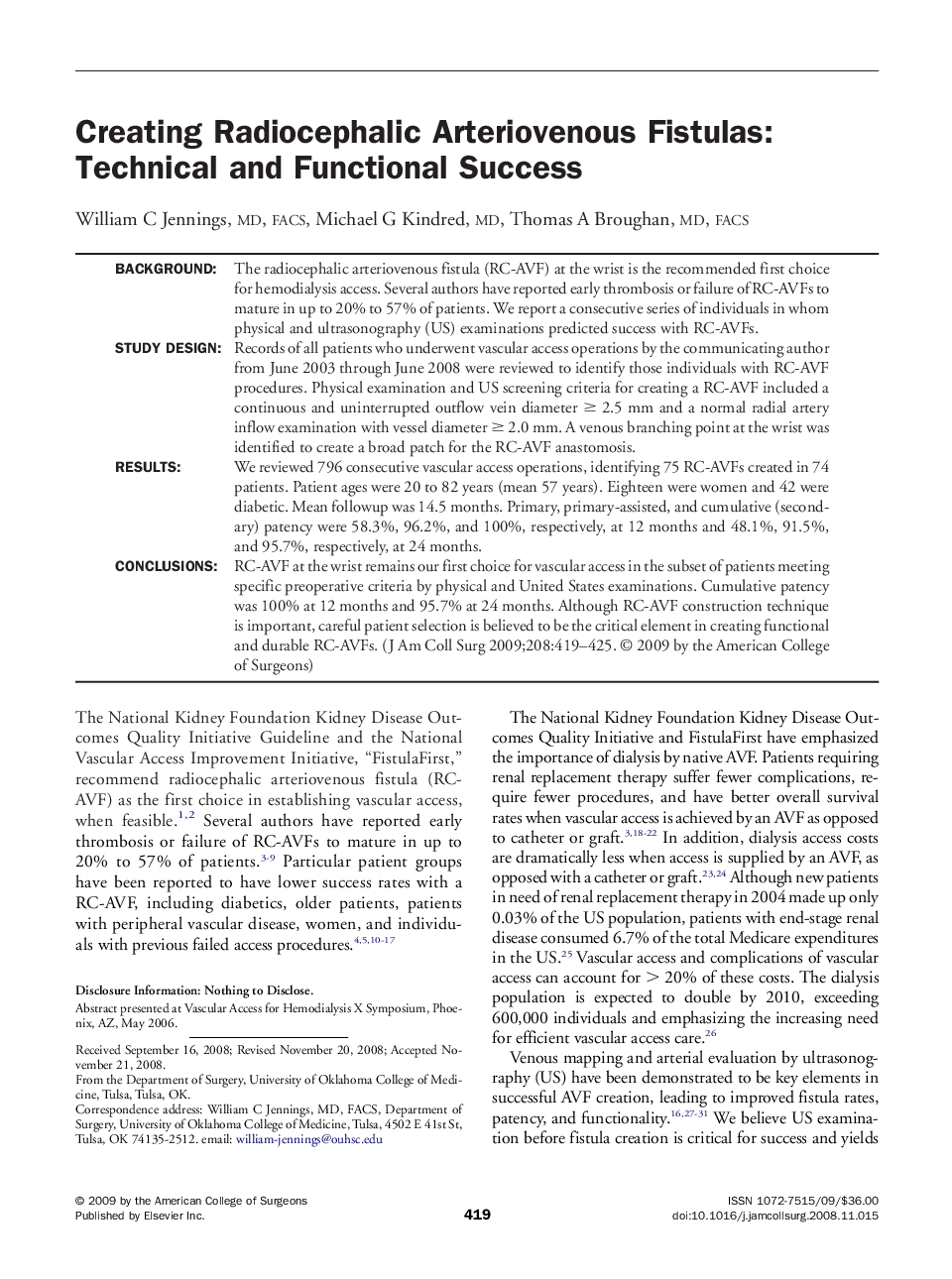| Article ID | Journal | Published Year | Pages | File Type |
|---|---|---|---|---|
| 4294010 | Journal of the American College of Surgeons | 2009 | 7 Pages |
BackgroundThe radiocephalic arteriovenous fistula (RC-AVF) at the wrist is the recommended first choice for hemodialysis access. Several authors have reported early thrombosis or failure of RC-AVFs to mature in up to 20% to 57% of patients. We report a consecutive series of individuals in whom physical and ultrasonography (US) examinations predicted success with RC-AVFs.Study DesignRecords of all patients who underwent vascular access operations by the communicating author from June 2003 through June 2008 were reviewed to identify those individuals with RC-AVF procedures. Physical examination and US screening criteria for creating a RC-AVF included a continuous and uninterrupted outflow vein diameter ≥ 2.5 mm and a normal radial artery inflow examination with vessel diameter ≥ 2.0 mm. A venous branching point at the wrist was identified to create a broad patch for the RC-AVF anastomosis.ResultsWe reviewed 796 consecutive vascular access operations, identifying 75 RC-AVFs created in 74 patients. Patient ages were 20 to 82 years (mean 57 years). Eighteen were women and 42 were diabetic. Mean followup was 14.5 months. Primary, primary-assisted, and cumulative (secondary) patency were 58.3%, 96.2%, and 100%, respectively, at 12 months and 48.1%, 91.5%, and 95.7%, respectively, at 24 months.ConclusionsRC-AVF at the wrist remains our first choice for vascular access in the subset of patients meeting specific preoperative criteria by physical and United States examinations. Cumulative patency was 100% at 12 months and 95.7% at 24 months. Although RC-AVF construction technique is important, careful patient selection is believed to be the critical element in creating functional and durable RC-AVFs.
